Chrysler 2010 Annual Report Download - page 60
Download and view the complete annual report
Please find page 60 of the 2010 Chrysler annual report below. You can navigate through the pages in the report by either clicking on the pages listed below, or by using the keyword search tool below to find specific information within the annual report.-
 1
1 -
 2
2 -
 3
3 -
 4
4 -
 5
5 -
 6
6 -
 7
7 -
 8
8 -
 9
9 -
 10
10 -
 11
11 -
 12
12 -
 13
13 -
 14
14 -
 15
15 -
 16
16 -
 17
17 -
 18
18 -
 19
19 -
 20
20 -
 21
21 -
 22
22 -
 23
23 -
 24
24 -
 25
25 -
 26
26 -
 27
27 -
 28
28 -
 29
29 -
 30
30 -
 31
31 -
 32
32 -
 33
33 -
 34
34 -
 35
35 -
 36
36 -
 37
37 -
 38
38 -
 39
39 -
 40
40 -
 41
41 -
 42
42 -
 43
43 -
 44
44 -
 45
45 -
 46
46 -
 47
47 -
 48
48 -
 49
49 -
 50
50 -
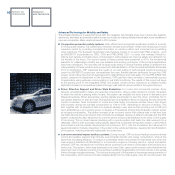 51
51 -
 52
52 -
 53
53 -
 54
54 -
 55
55 -
 56
56 -
 57
57 -
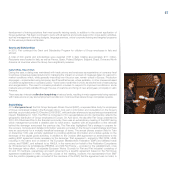 58
58 -
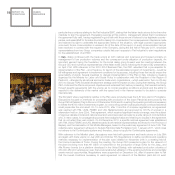 59
59 -
 60
60 -
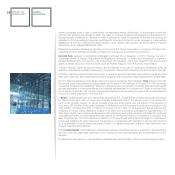 61
61 -
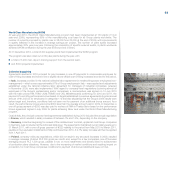 62
62 -
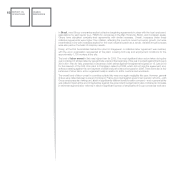 63
63 -
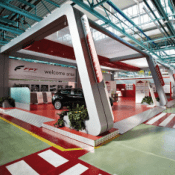 64
64 -
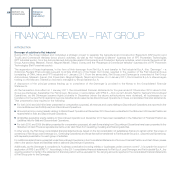 65
65 -
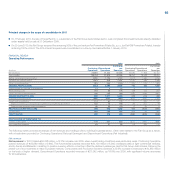 66
66 -
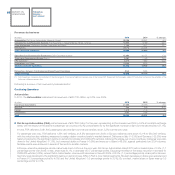 67
67 -
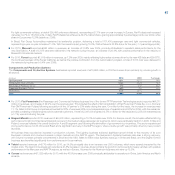 68
68 -
 69
69 -
 70
70 -
 71
71 -
 72
72 -
 73
73 -
 74
74 -
 75
75 -
 76
76 -
 77
77 -
 78
78 -
 79
79 -
 80
80 -
 81
81 -
 82
82 -
 83
83 -
 84
84 -
 85
85 -
 86
86 -
 87
87 -
 88
88 -
 89
89 -
 90
90 -
 91
91 -
 92
92 -
 93
93 -
 94
94 -
 95
95 -
 96
96 -
 97
97 -
 98
98 -
 99
99 -
 100
100 -
 101
101 -
 102
102 -
 103
103 -
 104
104 -
 105
105 -
 106
106 -
 107
107 -
 108
108 -
 109
109 -
 110
110 -
 111
111 -
 112
112 -
 113
113 -
 114
114 -
 115
115 -
 116
116 -
 117
117 -
 118
118 -
 119
119 -
 120
120 -
 121
121 -
 122
122 -
 123
123 -
 124
124 -
 125
125 -
 126
126 -
 127
127 -
 128
128 -
 129
129 -
 130
130 -
 131
131 -
 132
132 -
 133
133 -
 134
134 -
 135
135 -
 136
136 -
 137
137 -
 138
138 -
 139
139 -
 140
140 -
 141
141 -
 142
142 -
 143
143 -
 144
144 -
 145
145 -
 146
146 -
 147
147 -
 148
148 -
 149
149 -
 150
150 -
 151
151 -
 152
152 -
 153
153 -
 154
154 -
 155
155 -
 156
156 -
 157
157 -
 158
158 -
 159
159 -
 160
160 -
 161
161 -
 162
162 -
 163
163 -
 164
164 -
 165
165 -
 166
166 -
 167
167 -
 168
168 -
 169
169 -
 170
170 -
 171
171 -
 172
172 -
 173
173 -
 174
174 -
 175
175 -
 176
176 -
 177
177 -
 178
178 -
 179
179 -
 180
180 -
 181
181 -
 182
182 -
 183
183 -
 184
184 -
 185
185 -
 186
186 -
 187
187 -
 188
188 -
 189
189 -
 190
190 -
 191
191 -
 192
192 -
 193
193 -
 194
194 -
 195
195 -
 196
196 -
 197
197 -
 198
198 -
 199
199 -
 200
200 -
 201
201 -
 202
202 -
 203
203 -
 204
204 -
 205
205 -
 206
206 -
 207
207 -
 208
208 -
 209
209 -
 210
210 -
 211
211 -
 212
212 -
 213
213 -
 214
214 -
 215
215 -
 216
216 -
 217
217 -
 218
218 -
 219
219 -
 220
220 -
 221
221 -
 222
222 -
 223
223 -
 224
224 -
 225
225 -
 226
226 -
 227
227 -
 228
228 -
 229
229 -
 230
230 -
 231
231 -
 232
232 -
 233
233 -
 234
234 -
 235
235 -
 236
236 -
 237
237 -
 238
238 -
 239
239 -
 240
240 -
 241
241 -
 242
242 -
 243
243 -
 244
244 -
 245
245 -
 246
246 -
 247
247 -
 248
248 -
 249
249 -
 250
250 -
 251
251 -
 252
252 -
 253
253 -
 254
254 -
 255
255 -
 256
256 -
 257
257 -
 258
258 -
 259
259 -
 260
260 -
 261
261 -
 262
262 -
 263
263 -
 264
264 -
 265
265 -
 266
266 -
 267
267 -
 268
268 -
 269
269 -
 270
270 -
 271
271 -
 272
272 -
 273
273 -
 274
274 -
 275
275 -
 276
276 -
 277
277 -
 278
278 -
 279
279 -
 280
280 -
 281
281 -
 282
282 -
 283
283 -
 284
284 -
 285
285 -
 286
286 -
 287
287 -
 288
288 -
 289
289 -
 290
290 -
 291
291 -
 292
292 -
 293
293 -
 294
294 -
 295
295 -
 296
296 -
 297
297 -
 298
298 -
 299
299 -
 300
300 -
 301
301 -
 302
302 -
 303
303 -
 304
304 -
 305
305 -
 306
306 -
 307
307 -
 308
308 -
 309
309 -
 310
310 -
 311
311 -
 312
312 -
 313
313 -
 314
314 -
 315
315 -
 316
316 -
 317
317 -
 318
318 -
 319
319 -
 320
320 -
 321
321 -
 322
322 -
 323
323 -
 324
324 -
 325
325 -
 326
326 -
 327
327 -
 328
328 -
 329
329 -
 330
330 -
 331
331 -
 332
332 -
 333
333 -
 334
334 -
 335
335 -
 336
336 -
 337
337 -
 338
338 -
 339
339 -
 340
340 -
 341
341 -
 342
342 -
 343
343 -
 344
344 -
 345
345 -
 346
346 -
 347
347 -
 348
348 -
 349
349 -
 350
350 -
 351
351 -
 352
352 -
 353
353 -
 354
354 -
 355
355 -
 356
356 -
 357
357 -
 358
358 -
 359
359 -
 360
360 -
 361
361 -
 362
362 -
 363
363 -
 364
364 -
 365
365 -
 366
366 -
 367
367 -
 368
368 -
 369
369 -
 370
370 -
 371
371 -
 372
372 -
 373
373 -
 374
374 -
 375
375 -
 376
376 -
 377
377 -
 378
378 -
 379
379 -
 380
380 -
 381
381 -
 382
382 -
 383
383 -
 384
384 -
 385
385 -
 386
386 -
 387
387 -
 388
388 -
 389
389 -
 390
390 -
 391
391 -
 392
392 -
 393
393 -
 394
394 -
 395
395 -
 396
396 -
 397
397 -
 398
398 -
 399
399 -
 400
400 -
 401
401 -
 402
402
 |
 |

59
Talks then resumed at the request of the majority of trade unions and, on December 23rd, an agreement was
signed at the Unione Industriale di Torino with FIM, UILM, FISMIC and UGL Metalmeccanici (both national
representatives and those for the Province of Turin), and with the Association of Fiat Middle Managers. The
agreement contains specific provisions to guarantee achievement of the necessary level of competitiveness
in terms of capacity utilization, flexibility, productivity, and governability. Implementation of the agreement was
subject to acceptance by a majority of workers and, in a referendum held on 13 and 14 January 2011, 54%
of employees voted in favor.
At Palazzo Chigi on 18 June 2009, Fiat announced to representatives of national and local government and the
trade unions that it would cease auto production at the Termini Imerese plant in 2011. This was reconfirmed on
22 December 2009 during the presentation (at Palazzo Chigi) of the Group’s 2010-2011 Plan for Italy. As no
alternative industrial solutions for the site had been forthcoming, the Group stated its willingness to work with
government and unions in supporting any viable proposals for conversion of the site put forward by the Region
of Sicily, or other public or private sector entities. On 29 January 2010, the Ministry for Economic Development
set up a round table – with representatives from the national government, the Region of Sicily, trade unions,
Confindustria Sicily and Fiat – to explore solutions for a viable industrial alternative at Termini Imerese. Several
subsequent meetings were held during the year, with regular updates provided by Invitalia (advisor to the
Ministry for Economic Development tasked with producing a development plan identifying manufacturing
and employment prospects in the area) on parties interested in submitting proposals for conversion of the
industrial zone at Termini Imerese, as well as their preliminary plans. At the meeting held on December 21st at
the Ministry for Economic Development, several proposals were presented that could potentially be developed
in parallel and that, according to the Ministry’s assessments, could generate employment for about 3,300
people in the area (compared to the approximate 1,600 people currently employed by Fiat Group), therefore
preventing any negative social impacts. Fiat Group reconfirmed the position expressed on several previous
occasions that it was willing to make the area at Termini Imerese available for new initiatives, on the condition
that priority will be given to employing the Group’s workers.
At the Ministry for Economic Development, the working group established in 2009, in collaboration with
the Region of Emilia Romagna, continued work to identify industrial solutions for CNH Italia S.p.A.’s site at
Imola and minimize the social impacts of the termination of production activities. Since the rationalization of
manufacturing for CNH’s Construction Equipment business in Italy was announced, over 230 employees
have been relocated to other Group plants or found solutions outside the Group, while the remaining 220 will
benefit from the exceptional temporary layoff benefit scheme (a mechanism made available under emergency
legislation) until 30 April 2011.
Management of production levels
The business environment improved during 2010, particularly for the capital goods sector, which had been
particularly hard hit by a collapse in demand in 2009. Recovery in the automobile sector was much more
contained, reflecting a decline in volumes following the elimination of eco-incentives, which had sustained
demand in 2009, particularly in Europe. In Italy, Group companies continued to make extensive use of
temporary layoff benefit schemes in managing production levels, although with a reduction of approximately
20% over the previous year (on a comparable scope of operations) and higher than average reductions
for all sectors except FGA, where the decrease was negligible, and Magneti Marelli, where there was a
modest increase. For FGA, in particular, there was an increase in use of these schemes at plants dedicated
to manufacture of passenger cars, but a significant decrease at the Sevel plant due to sharply higher
production levels for light commercial vehicles. During the year, 13 plants, employing approximately 9,350
workers, reached the limit for ordinary benefits (52 weeks in any rolling 2-year period) and recourse was
made to the extraordinary temporary layoff benefit scheme, which provides for a further 12 months coverage
